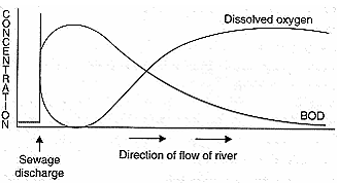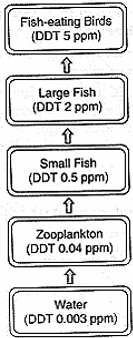Important Questions of Class 12 Biology Environmental Issues. myCBSEguide has just released Chapter Wise Question Answers for class 12 Biology. There chapter wise Test papers with complete solutions are available for download in myCBSEguide website and mobile app. These Extra Questions with solution are prepared by our team of expert teachers who are teaching grade in CBSE schools for years. There are around 4-5 set of solved Biology Extra questions from each and every chapter. The students will not miss any concept in these Chapter wise question that are specially designed to tackle Board Exam. We have taken care of every single concept given in CBSE Class 12 Biology syllabus and questions are framed as per the latest marking scheme and blue print issued by CBSE for Class 12.
CBSE Class 12 Biology Ch – 16 Practice Test
CBSE Class 12 Biology Chapter 16 Test Papers
Ch-16 Environmental Issues
- Shifting cultivation practiced in India is called
- Rabi
- Jhum
- Sawani
- Harshi
- Air pollution is:
- 5th leading cause of deaths in Indian sub-continent.
- ranked among top 10 killers in the world.
- 7th most dangerous killer in south Asia.
-
only ii & iii are correct
-
all statements are correct
-
only i & iii are correct
-
only i & ii are correct
-
-
Which one of the following is not an ecological pyramid
-
Pyramid of standing crop
-
Pyramid of energy
-
Pyramid of biomass
-
Pyramid of number
-
-
Primary constituents of photochemical smog are
-
SO2 and Water
-
NO2NO2 and PAN
-
NH3NH3and DDT
-
-
An amendment in Air (Prevention and control of Pollution) Act1981 included a new pollutant named :
-
heat
-
solid waste
-
radioactive waste
-
noise
-
- Humans as well as other animals have been dumping their wastes into the environment for thousand of years. What is the reason that this appears to be such a problem today?
-
Biological magnification is more likely in aquatic food chains. (True/False)
-
Poison like DDT become more magnified (concentrated) as they pass upward from one trophic level to another. (True/False)
-
The city government is planning to bring metro rail to your area. But this will require around 10,000 trees to be cut. Do you think govt. should go ahead with the project? Justify your answer?
-
What is eutrophication? Explain its consequence on the life of plants and animals in such water bodies.
-
Study the graph given below and answer the
- What is the relationship between dissolved oxygen and biochemical oxygen

- Mention their effect on aquatic life in the river.
- What is the relationship between dissolved oxygen and biochemical oxygen
-
You have read the newspaper reports that lots of cows die because of polythene bags getting entangled in their intestine. You go to market and see vegetable vender selling vegetables in plastic bags. What will be your suggestion to –
(i) buyer and (ii) seller?
-
Study the given aquatic food chain and answer the question that follows:
- Given reason why there is a continuous increase in the DDT content in different trophic levels of the chain.
- Name the phenomenon responsible for the increase is DDT content.

-
A few months ago the people of Ramgarh started a bad practice of disposing their waste in the pond of village which was earlier source of drinking water. It resulted in deterioration of quality of water and fish mortality.
(a) What changes do you think have taken place in pond? Name such condition.
(b) What measure will you take to stop villagers for such practices as well as to improve the condition?
-
What are the various constituents of domestic sewage? Discuss the effects of sewage discharge on a river.
Ch-16 Environmental Issues
Answer
-
- Jhum, Explanation: Shifting cultivation practiced in India is called jhum cultivation in which forest is cleaned for agriculture practice and after few years this area is abandoned and another forest land is cleared.
-
- only i & ii are correct, Explanation: Air pollution causes a number of respiratory disease including lung cancer. It is the 5th leading causes of deaths in Indian sub-constinent and 7th most dangerous killer in south Asia.
-
- Pyramid of standing crop, Explanation: The ecological pyramids represent the trophic structure and also trophic function of the ecosystem. In many ecological pyramids, the producer form the base and the successive trophic levels make up the apex. The ecological pyramids may be of following three kinds.
- Pyramid of energy
- Pyramid of biomass
- Pyramid of number
- Pyramid of standing crop, Explanation: The ecological pyramids represent the trophic structure and also trophic function of the ecosystem. In many ecological pyramids, the producer form the base and the successive trophic levels make up the apex. The ecological pyramids may be of following three kinds.
-
- NO2NO2 and PAN, Explanation: Photochemical smog is a mixture of air pollutants which have been chemically altered into further noxious compounds by exposure to sunlight. The main components of photochemical smog are nitrogen oxides, Volatile Organic Compounds (VOCs), tropospheric ozone, and PAN (peroxyacytyl nitrate).The smog causes poor visibility on roads and airports.
-
- noise, Explanation: The Air (Prevention and Control of Pollution) Act, 1981 an Act of the Parliament of India to control and prevent air pollution in india. It was amended in 1987. There are some definations of the act. Definitions. – In this Act, unless the context otherwise requires,
- “air pollutant” means any solid, liquid or gaseous substance (including noise)] present in the atmosphere in such concentration as may be or tend to be injurious to human beings or other living creatures or plants or property or environment;
- “air pollution” means the presence in the atmosphere of any air pollutant;
- “approved appliance” means any equipment or gadget used for the burning of any combustible material or for generating or consuming any fume, gas or particulate matter and approved by the State Board for the purposes of this Act;
- noise, Explanation: The Air (Prevention and Control of Pollution) Act, 1981 an Act of the Parliament of India to control and prevent air pollution in india. It was amended in 1987. There are some definations of the act. Definitions. – In this Act, unless the context otherwise requires,
- The human population is increasing rapidly, producing more wastes, and a significant amount of the wastes are non biodegradable.
- True, Biological magnification often refers to the process whereby certain substances such as pesticides or heavy metals move up the food chain, work their way into rivers or lakes, and are eaten by aquatic organisms such as fish, which in turn are eaten by large birds, animals or humans
- True, Biological magnification means accumulation of poisonous materials in successive trophic levels in a food chain. This happens when a toxin is ingested or eaten and moved up the food chain from one organism to another organism. As it moves up the food chain the toxin levels gets magnified or more concentrated. DDT is one example of harmful substance that have contaminated food chains.
- Yes. But the track of metro should be so changed that minimum no of trees are cut. Track can be made underground and more trees can be planted after the project is over.
Values
• Sensitivity towards environment
• Decision making. - Eutrophication is nutrient enrichment of water bodies. This leads to algal bloom causing exhaustions of oxygen. Finally, life supporting conditions are lost in the affected water body. This leads to destruction of affected ecosystem.
-
- When BOD is high, dissolved O2 is less / inversely proportional.
- If dissolved O2 is less and BOD is high, aquatic organisms die. If dissolved O2 is more and BOD is low, freshwater organisms reappear
- I) Use cloth or jute bag to save environment and thus life of cow.
II) Use paper bags, polythene are non biodegradable and toxic.
Values
• Sensitivity to words environment
• Concern. -
- There is a continuous increase in DDT content in different trophic levels of the chain, this is known as biological magnification in the aquatic food chain. This happens because a toxic substance accumulated by an organism cannot be metabolized or excreted and is thus passed on to the next higher trophic
- Biomagnification.
- A) Eutrophication – Brief explanation.
B) Any two means of spreading awareness of disposal of waste and keeping the pond clean.
Values
• Service to society
• Concern about environment. - Domestic sewage or municipal waste water contains 0.1% impurities and 99.9% water. Human excreta, food residue detergents and every other thing that passes into sewer from residential areas constitutes domestic sewage.
The important components are:
(i) Suspended solids : Grit made of sand, soil and clay.
(ii) Colloidal particles: They include excreta, fine fibres of paper and cloth and bacterial
(iii) Dissolved material: They are inorganic nutrients like nitrate, ammonia, sodium, calcium.
Effects of sewage discharge on a river:
(i) River water gets contaminated with various infections agents microorganisms use the oxygen thereby causing deoxygenation of water which in turn stimulates algal blooming resulting death of aquatic animals.
(ii) Domestic sewage stimulates the activity of decomposers, which require lot of . Therefore BOD (Biochemical oxygen demand) increases. Quantity of dissolved falls as a result fishes and other water organisms are killed.
(iii) Organic wastes form a scum and sludge in polluted water which become unfit for industrial uses.
Class 12 Biology Chapter Wise Test Paper
- Reproduction in Organisms
- Sexual Reproduction in Flowering Plants
- Human Reproduction
- Reproductive Health
- Principles of Inheritance and Variation
- Molecular Basis of Inheritance
- Evolution
- Human Health and Disease
- Strategies for Enhancement in Food Production
- Microbes in Human Welfare
- Biotechnology Principles and Processes
- Biotechnology and its Applications
- Organisms and Populations
- Ecosystem
- Biodiversity and Conservation
- Environmental Issues

Test Generator
Create question paper PDF and online tests with your own name & logo in minutes.
Create Now
Learn8 App
Practice unlimited questions for Entrance tests & government job exams at ₹99 only
Install Now